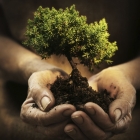-
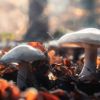 +20 +1
+20 +1Does a Vast Network of Fungi Connect Forests? Here's What We Know.
The possibility that communication networks of fungi exist connecting forest ecosystems in a 'wood-wide web' has increasingly gained attention among researchers in recent decades.
-
 +19 +1
+19 +1Instead of Building Structures on Mars, we Could Grow Them With the Help of Bacteria
Since the 1990s, several architectures have been drafted for crewed missions to Mars, all of which have emphasized the need for keeping launch mass low. Suggestions for how this could be accomplished include inflatable modules. But as Dr. Jin emphasized in her proposal, the physical structures used to outfit the inflatable modules cannot be carried by a crewed spacecraft and generally require a second vehicle to launch them. This is a logistical challenge for missions and drastically increases launch costs.
-
 +23 +1
+23 +1Ethereal New Plant Species Doesn't Use Photosynthesis - It's Found Something Sneakier
Cloaked by the shadows of enchanting Asian woodlands, strange growths can be seen peeking out from between leaf litter like the ghosts of long-dead flowers.
-
 +14 +1
+14 +1Mushrooms communicate with each other using up to 50 ‘words’, scientist claims
Buried in forest litter or sprouting from trees, fungi might give the impression of being silent and relatively self-contained organisms, but a new study suggests they may be champignon communicators. Mathematical analysis of the electrical signals fungi seemingly send to one another has identified patterns that bear a striking structural similarity to human speech.
-
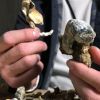 +3 +1
+3 +1B.C. non-profit challenges Health Canada to end 50-year prohibition on magic mushrooms | CBC News
TheraPsil has sent a 165-page proposal to Health Canada outlining regulations for so-called magic mushrooms based on the same ones the federal government first created 20 years ago for medicinal cannabis.
-
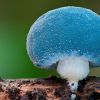 +14 +1
+14 +1Stephen Axford: How fungi changed my view of the world
-
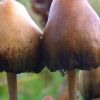 +26 +1
+26 +1A Man Injected Magic Mushroom 'Tea' Into His Veins, And Fungus Grew Inside Him
A man brewed a tea from "magic mushrooms" and injected the concoction into his veins; several days later, he ended up at the emergency department with the fungus growing in his blood.
-
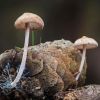 +4 +1
+4 +1There is so much we don't yet know about fungi
Fungi are perhaps the most enigmatic organisms on the planet. Entangled Life by Merlin Sheldrake says we are only just beginning to discover how they work
-
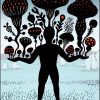 +4 +1
+4 +1The Secret Lives of Fungi
They shape the world—and offer lessons for how to live in it.
-
 +3 +1
+3 +1You Should Know About This Chernobyl Fungus That Eats Radiation
Scientists have discovered that a longtime fungal resident of the Chernobyl complex could actually “eat” radiation. In an upcoming paper, scientists will share the results of growing the fungus on the International Space Station. Scientists have known about this fungus, and similar extremophile organisms that can thrive on radiation, since at least 2007. The variety found in Chernobyl “can decompose radioactive material such as the hot graphite in the remains of the Chernobyl reactor,” Nature said in 2007.
-
 +4 +1
+4 +1The largest living thing on Earth is a humongous fungus
Forget blue whales and giant redwood trees. The biggest living organism is over 2 miles across, and you'll hardly ever see it
-
 +21 +1
+21 +1NASA wants to grow a Moon base out of mushrooms
"Right now, traditional habitat designs for Mars are like a turtle — carrying our homes with us on our backs — a reliable plan, but with huge energy costs."
-
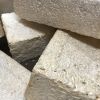 +14 +1
+14 +1Moon 'shrooms? Fungi eyed to help build lunar bases and Mars outposts
NASA researchers are investigating the potential of mycelia — the mass of nutrient-absorbing, widely branching underground threads that make up much of a fungus's bulk — to help construct outposts on the moon and Mars.
-
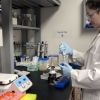 +21 +1
+21 +1Genetically Engineered 'Magic Mushroom' Could Treat Depression
One person’s hallucinogenic drug is another person’s antidepressant. Scientists at Miami University discovered a way to genetically engineer bacteria from the psilocybin (or “magic”) mushroom to help treat depression. If ingested, the fungus breaks down to produce psilocin, which has mind-altering effects similar to LSD, mescaline, and DMT.
-
 +21 +1
+21 +1A fungus makes a chemical that neutralizes the stench of skunk spray
A puppy pal that gets sprayed by a skunk is no friend to human noses. The nasty odor can linger for weeks or more. But at least one kind of Tolypocladium fungi makes a chemical that can snuff out the stink. Called pericosine, it reacts with skunk spray’s sulfur-containing compounds, forming residues that aren’t offensive to the nose and can be more easily washed away, researchers report in the July 26 Journal of Natural Products.
-
 +9 +1
+9 +1Brainless fungi trade resources with plants like a stock market
Fungi and plants have a symbiotic relationship in which they trade phosphorous for carbon, and the mechanics of this market are surprisingly sophisticated. By Daniel Cossins.
-
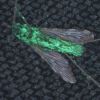 +11 +1
+11 +1Scientists Genetically Modify Fungus To Kill Mosquitoes That Spread Malaria
The modified fungus produces spider toxin that rapidly kills mosquitoes, raising hopes for a new weapon to fight a disease that sickens millions. But not everyone is convinced.
-
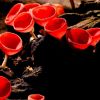 +17 +1
+17 +1Complex life may only exist because of millions of years of groundwork by ancient fungi
Newly discovered billion-year-old fossilised fungi are more than twice as old as previous finds, and suggest that fungi may have been preparing Earth's lands for plant life for millions of years.
-
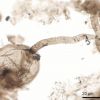 +34 +1
+34 +1Billion-year-old fossils may be early fungus
When did the first complex multicellular life arise? Most people, being a bit self-centered, would point to the Ediacaran and Cambrian, when the first animal life appeared and then diversified. Yet studies of DNA suggest that fungi may have originated far earlier than animals.
-
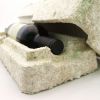 +13 +1
+13 +1Ikea to use mushroom packaging that will decompose in a garden within weeks
The furniture retailer is looking at using biodegradable mycelium “fungi packaging” as part of its efforts to reduce waste and increase recycling. It’s no secret polystyrene is devastating to the environment. But, do you know how exactly that is so? According to a fact-sheet provided by Harvard, polystyrene – which is made from petroleum, a non-sustainable, non-renewable, heavily polluting and fast-disappearing commodity – is not biodegradable, as it takes thousands of years to break down. In addition, it is detrimental to wildlife that ingests it.
Submit a link
Start a discussion
















